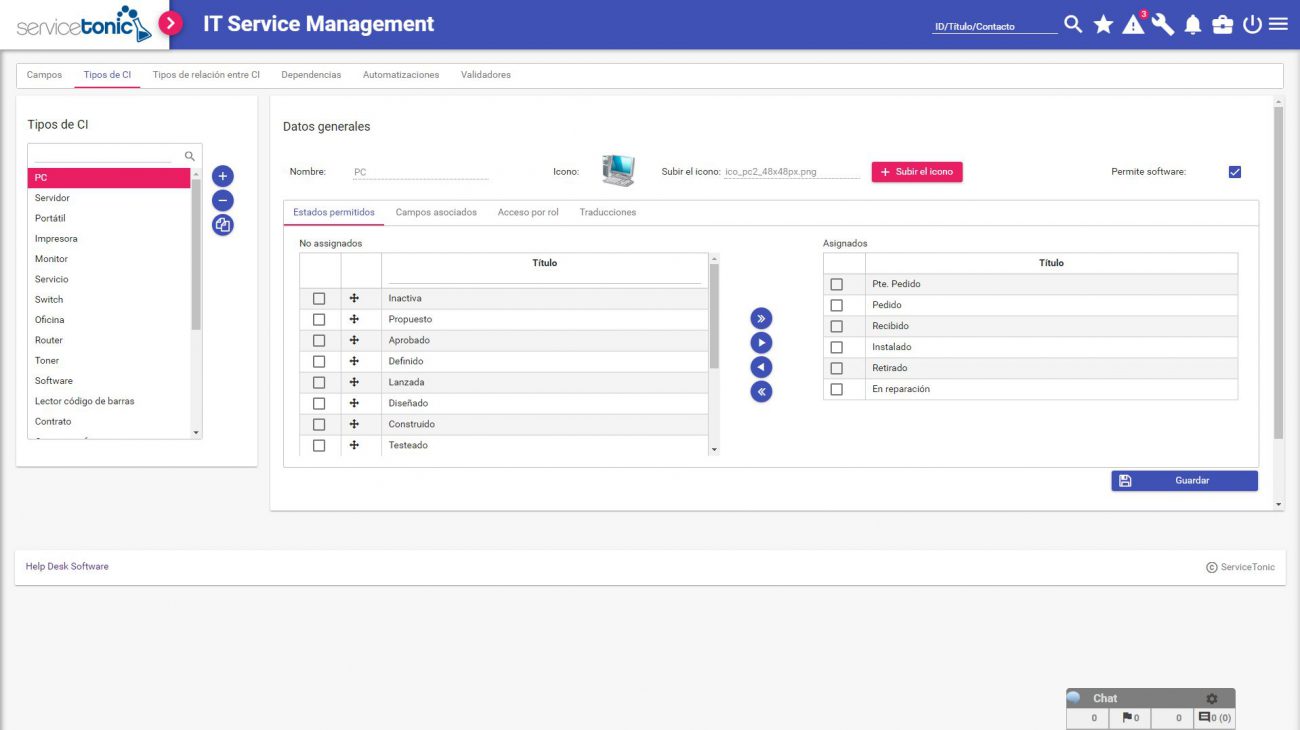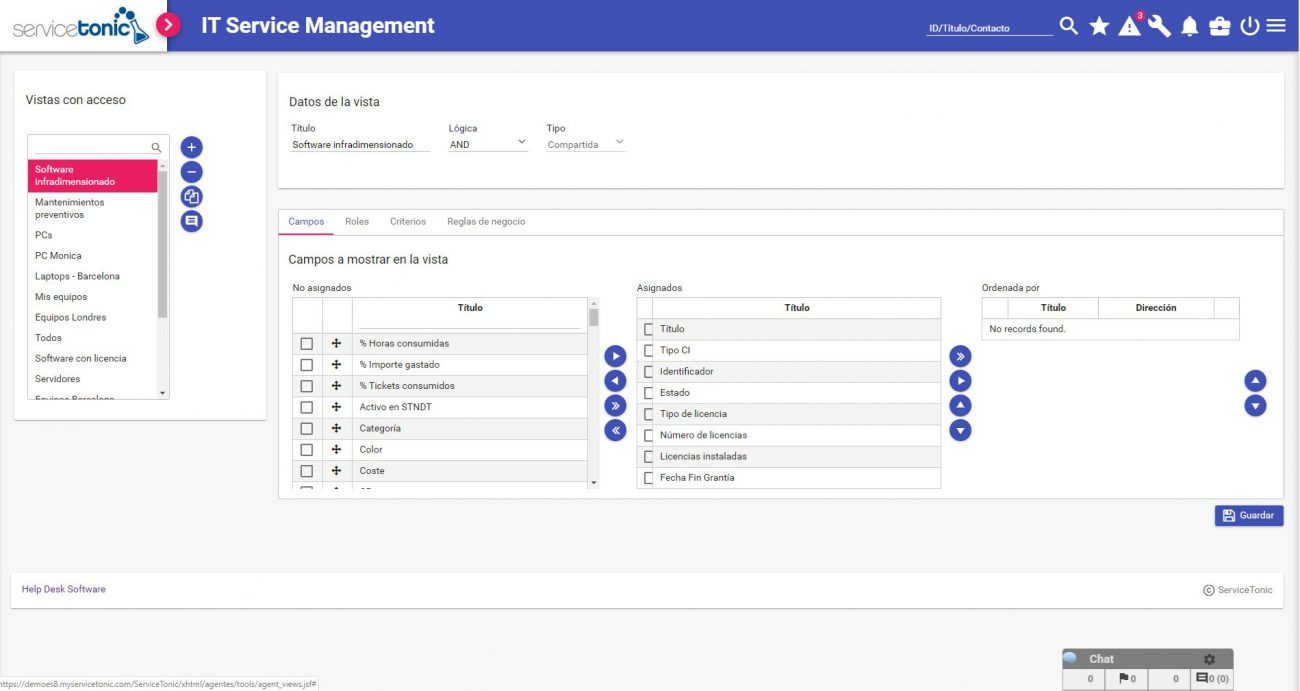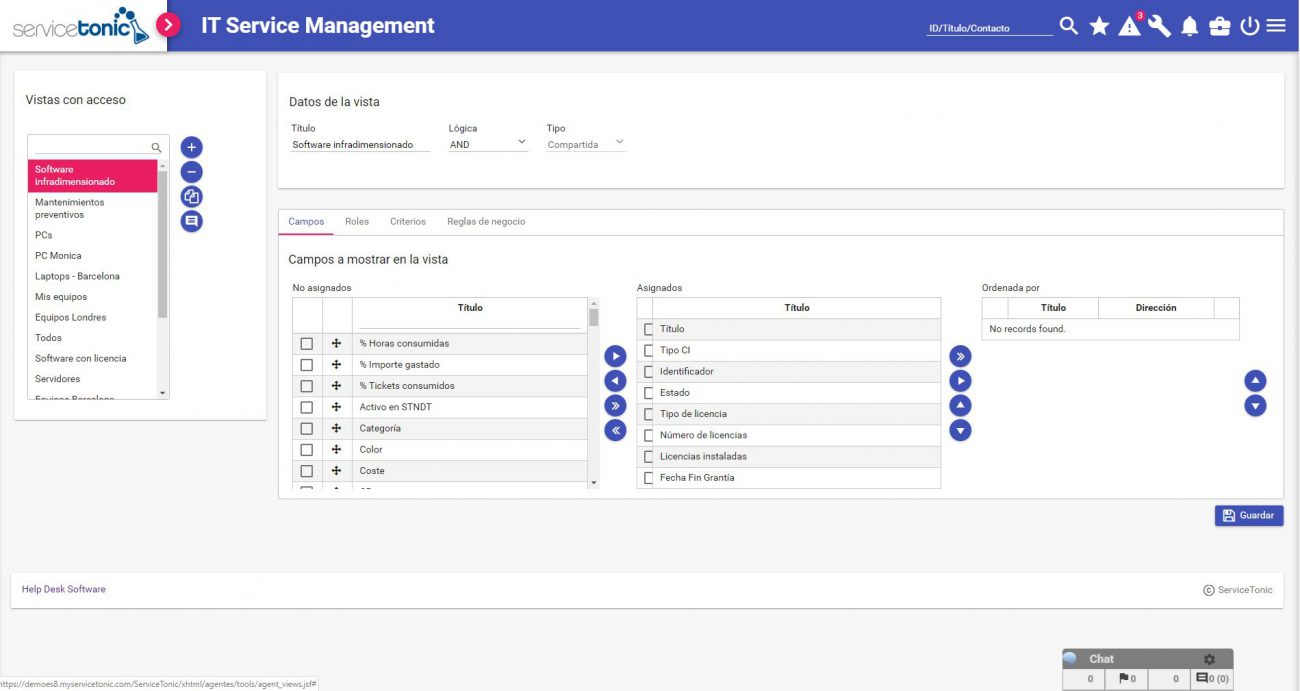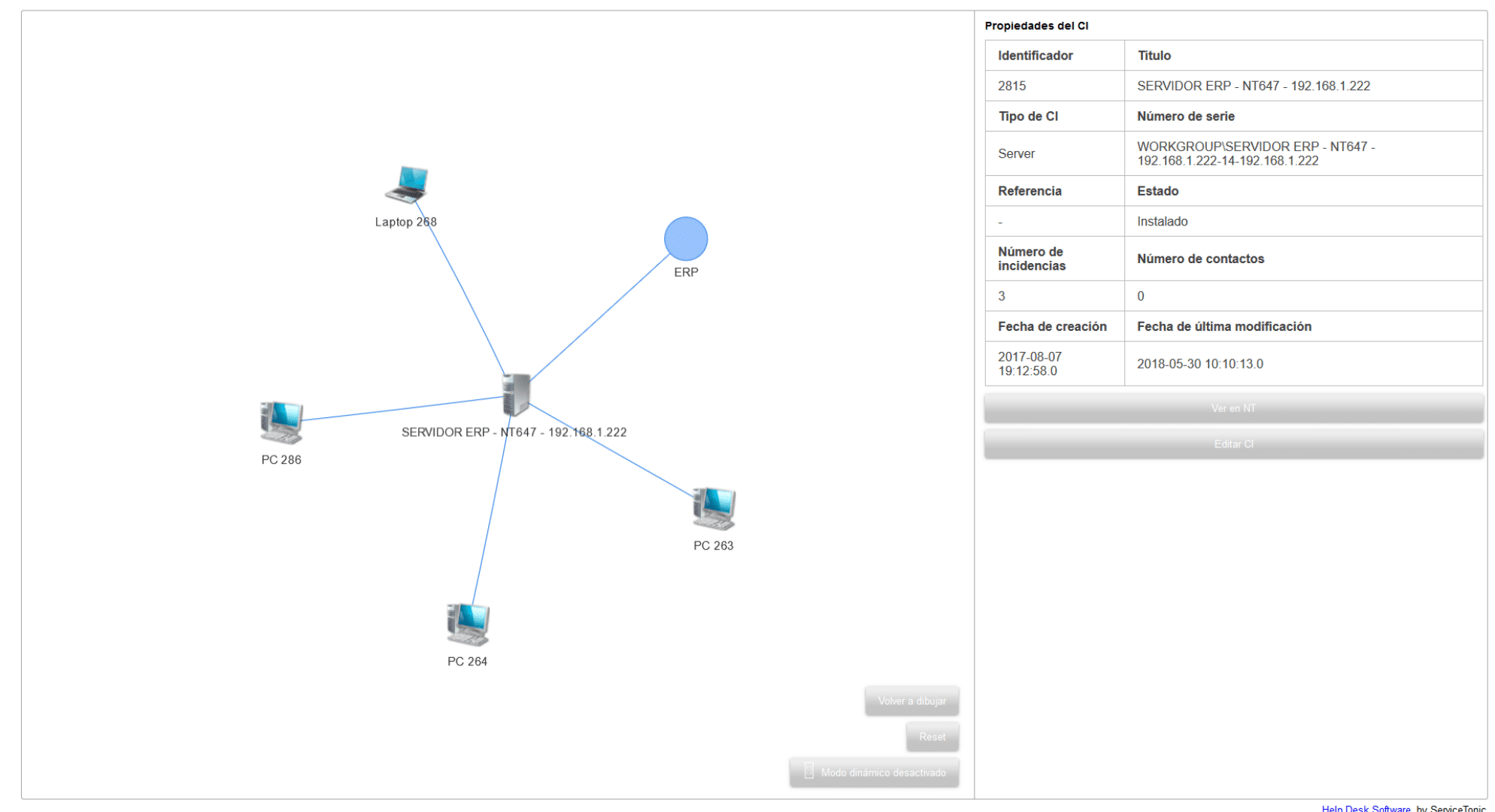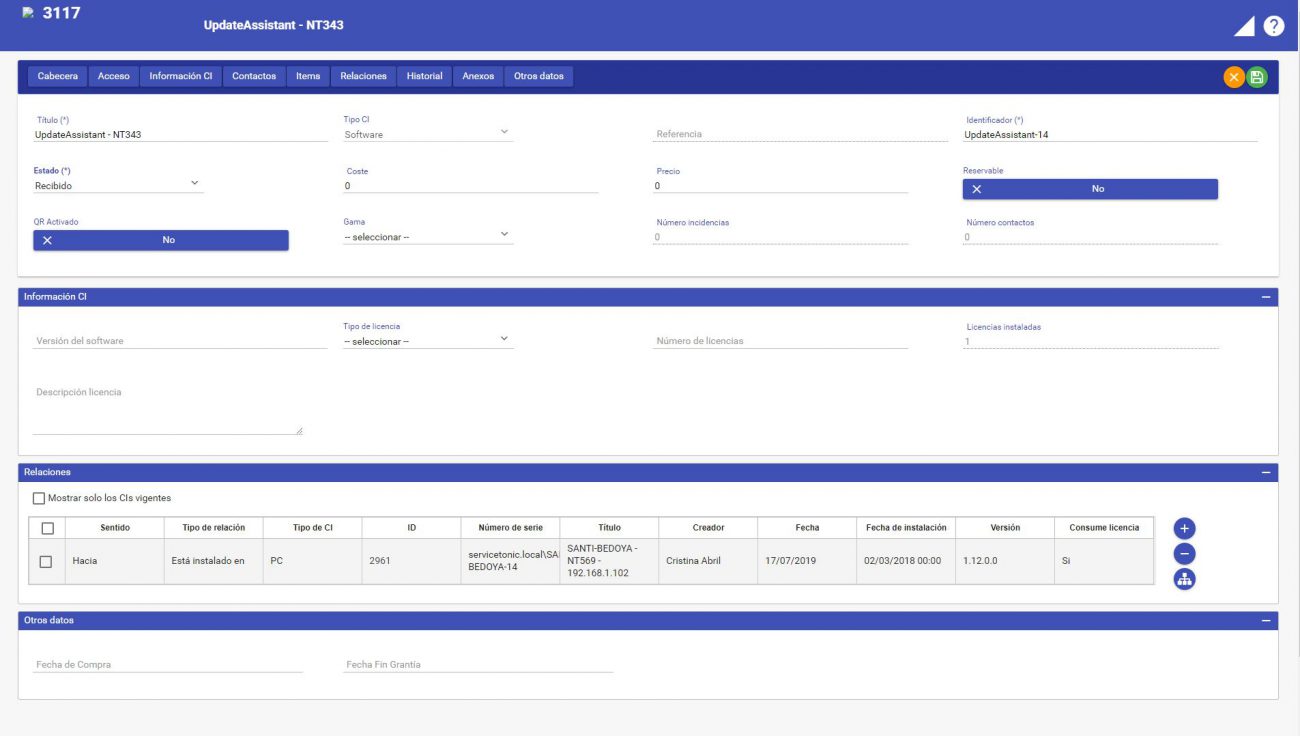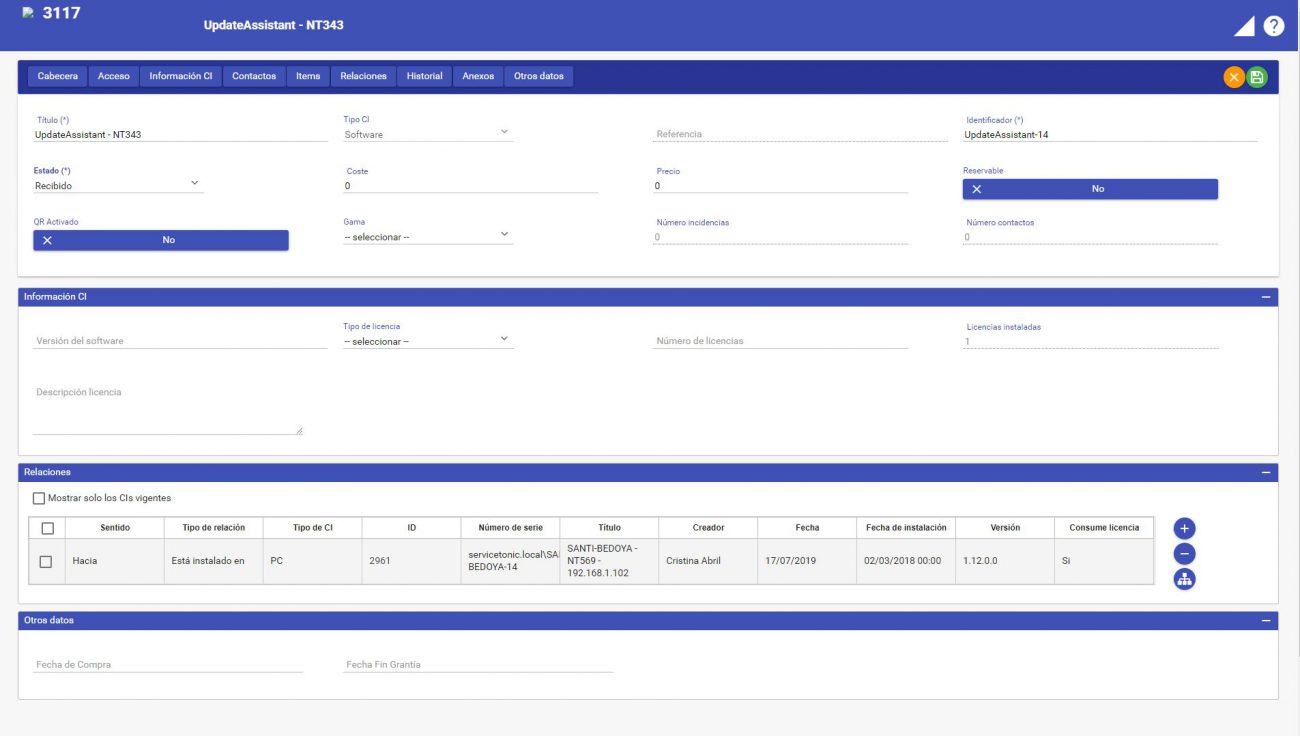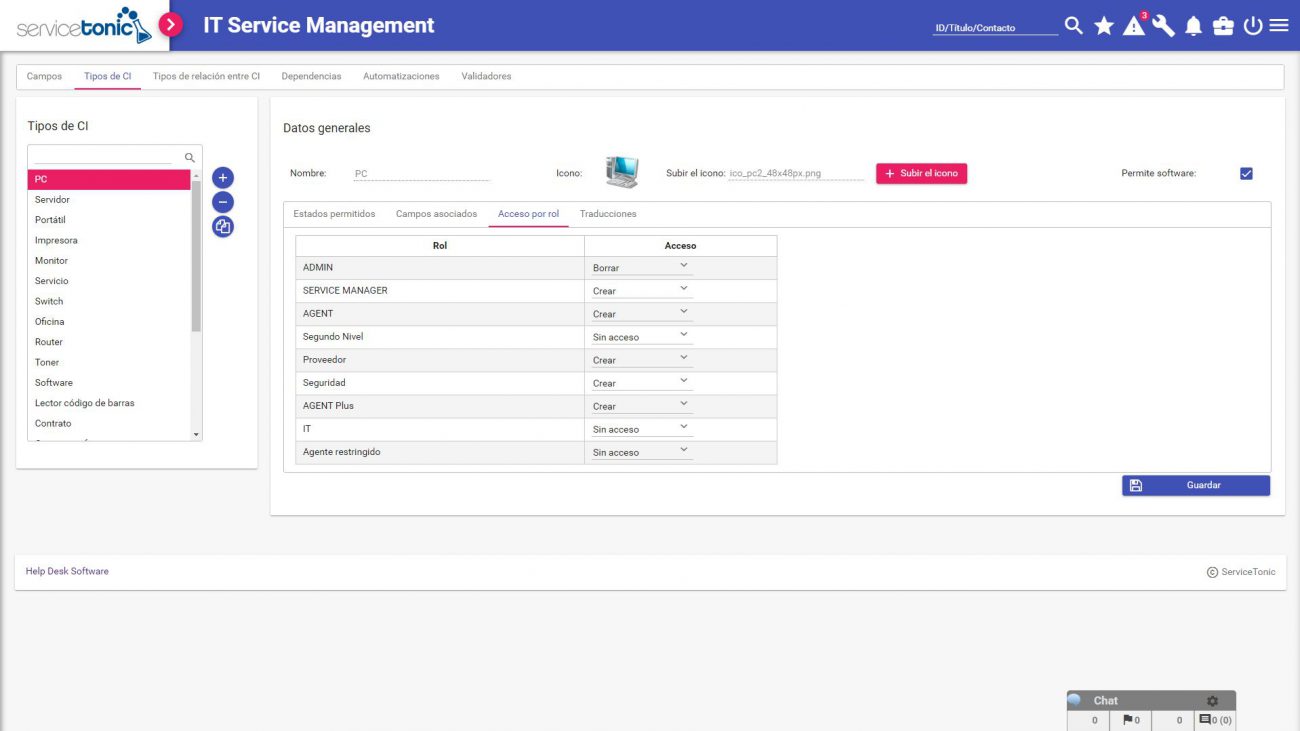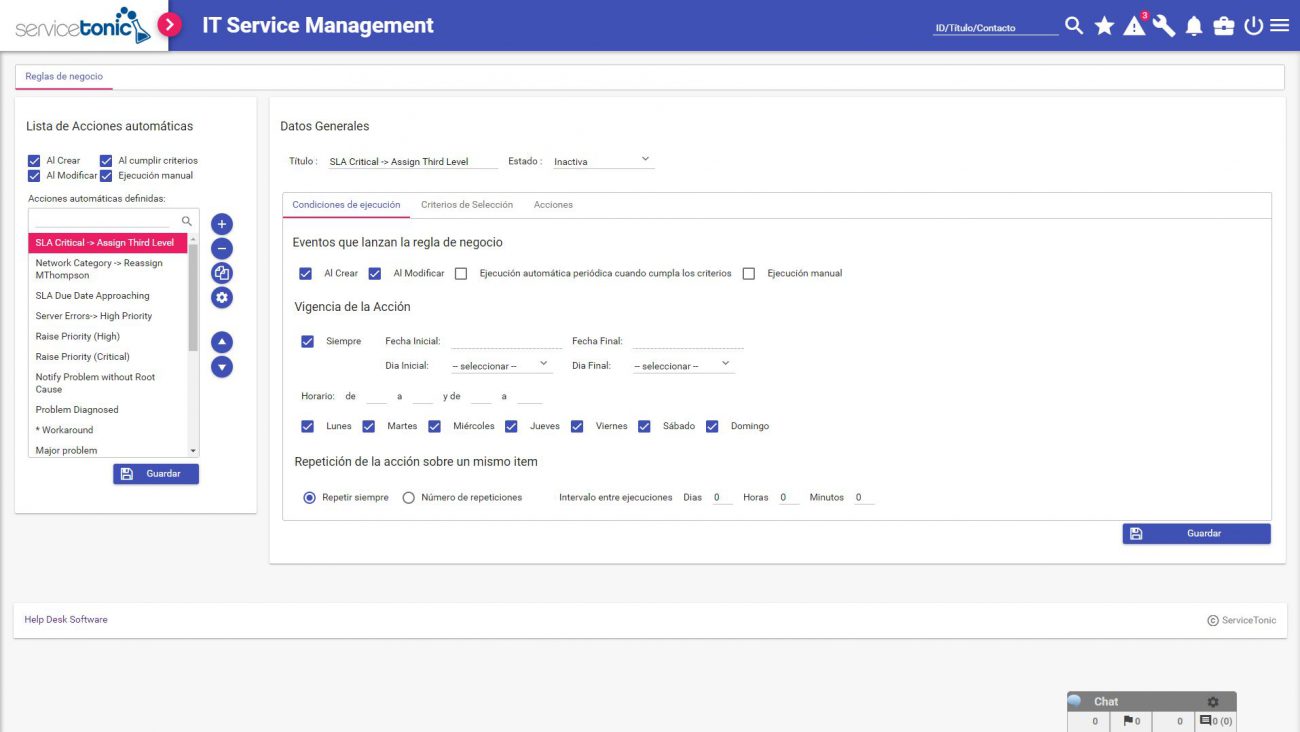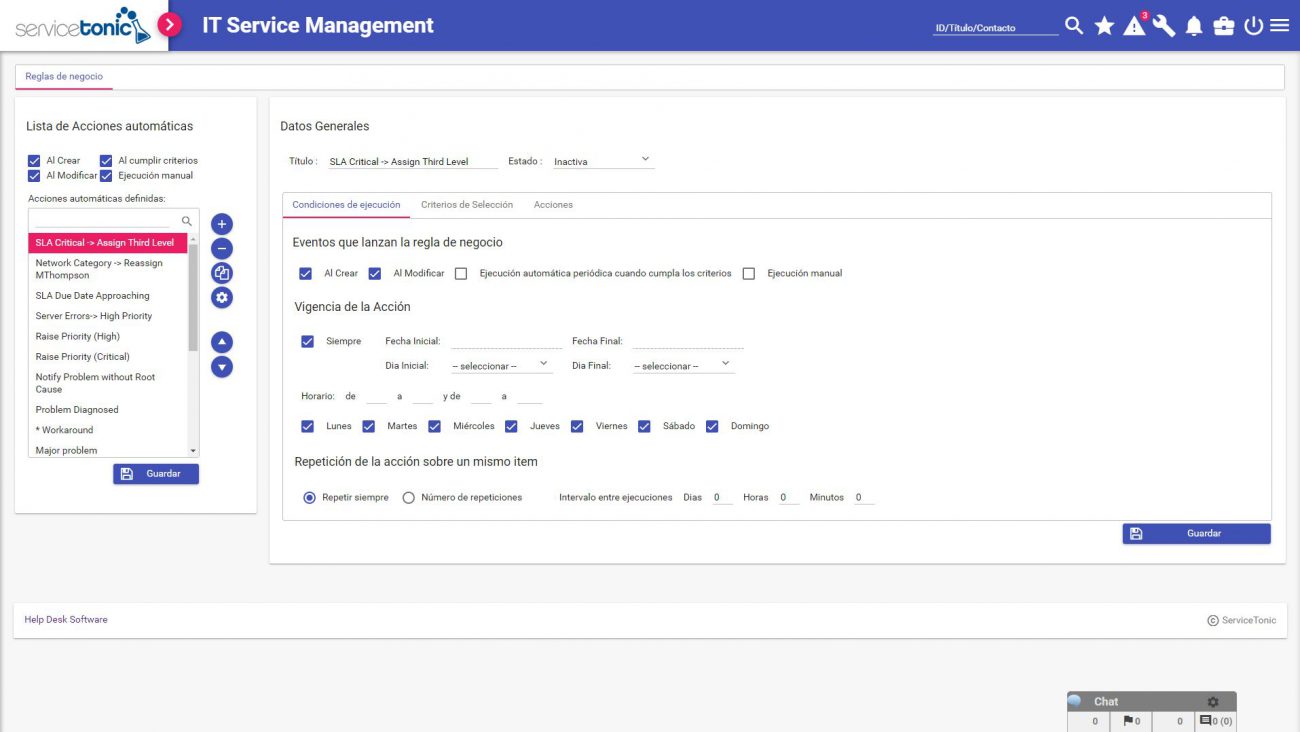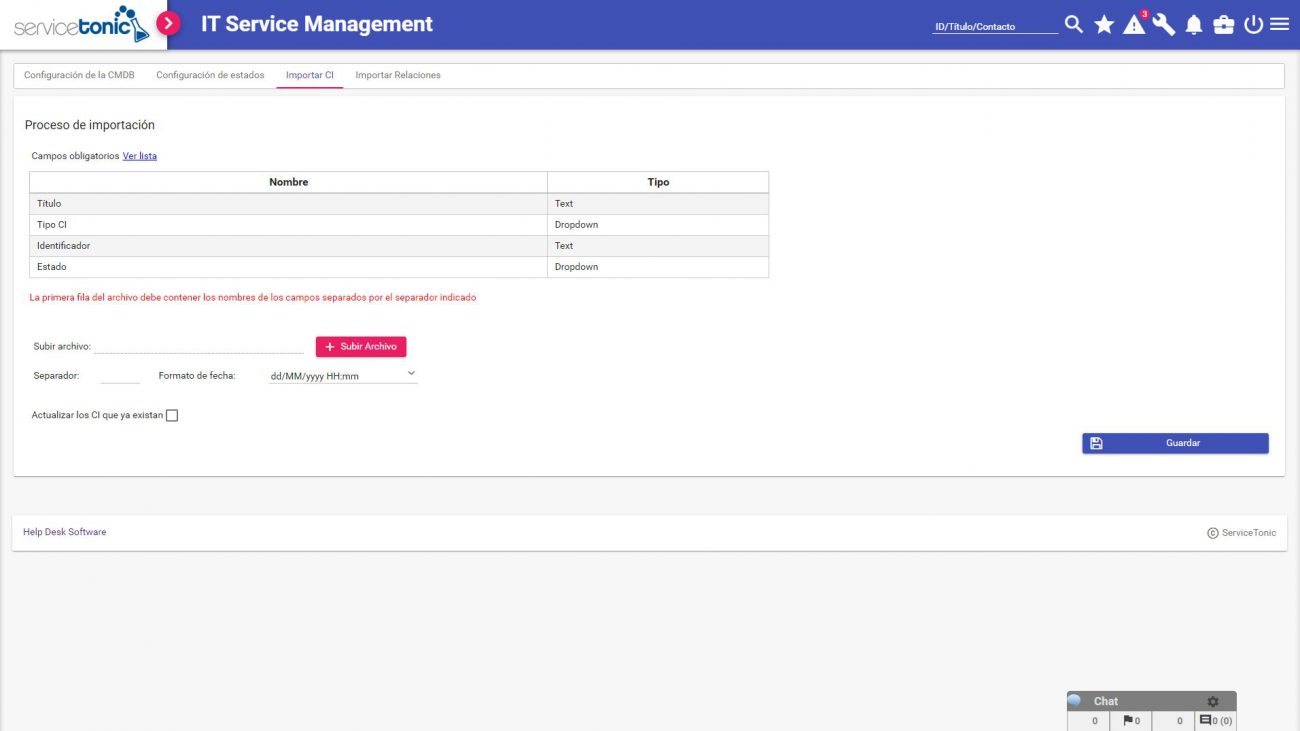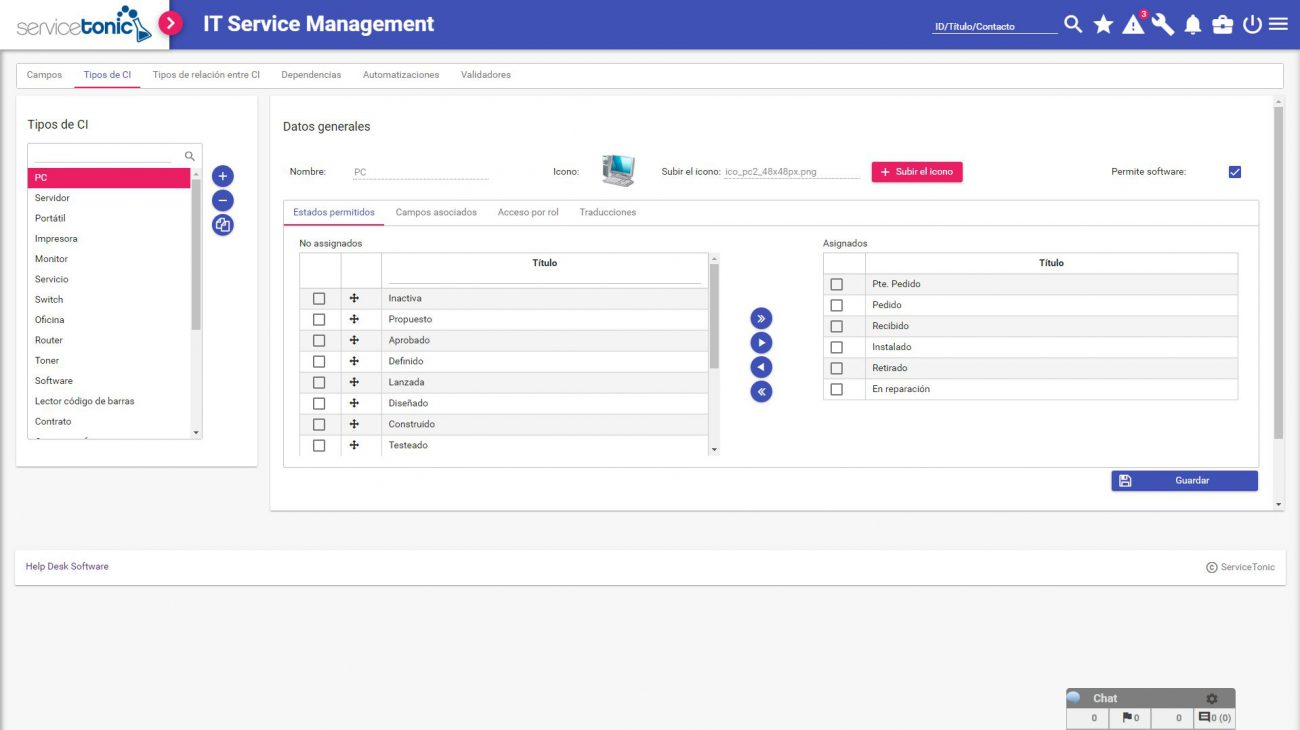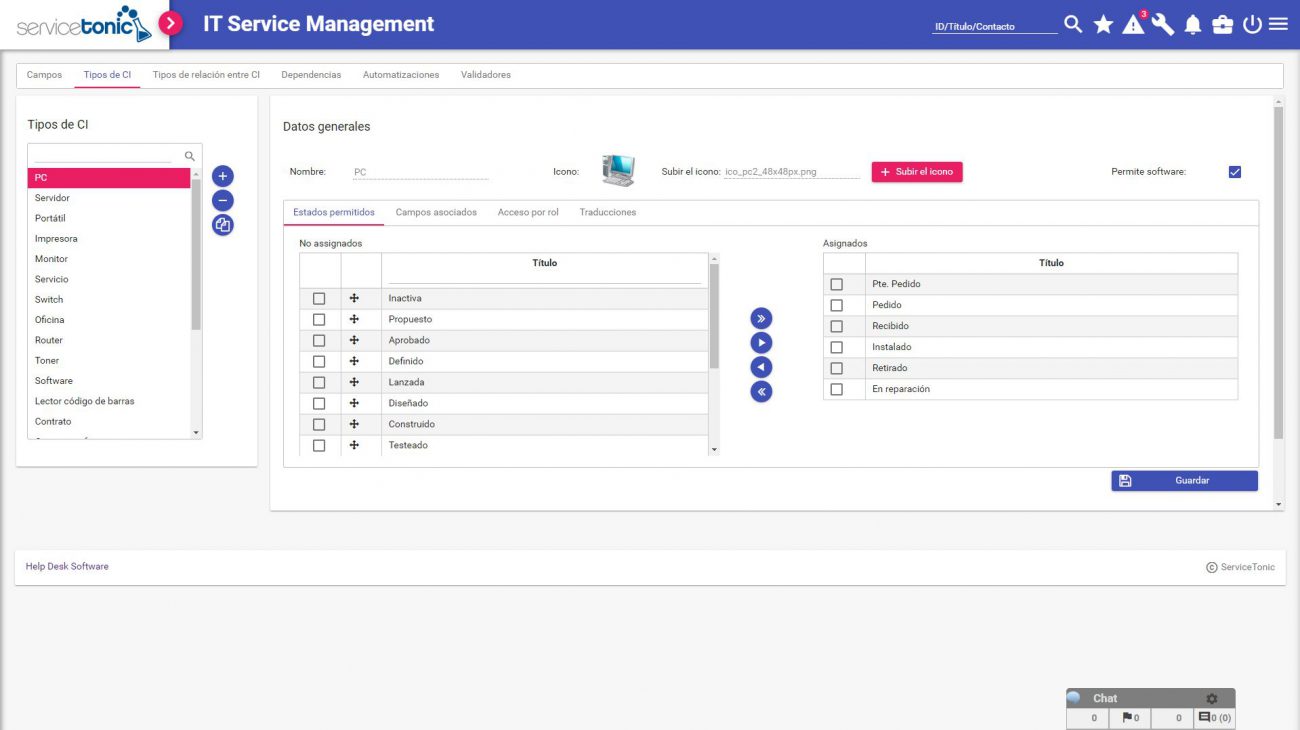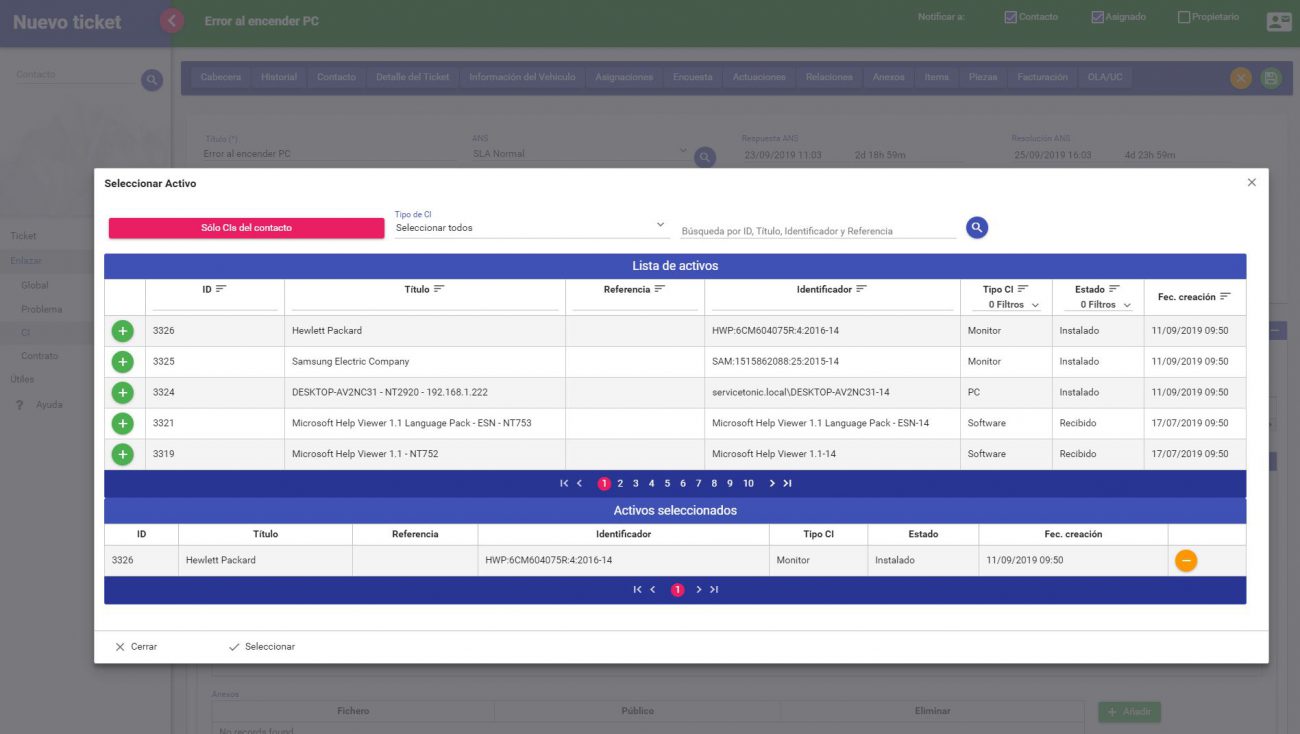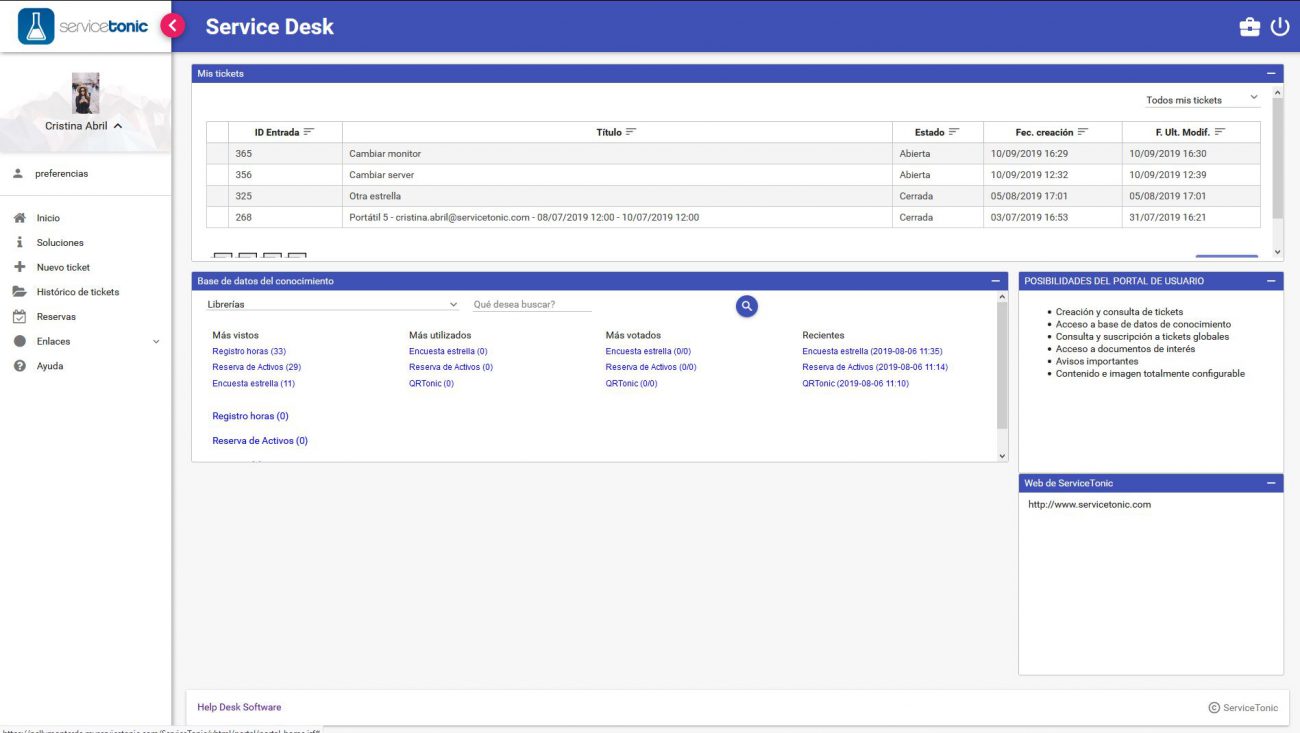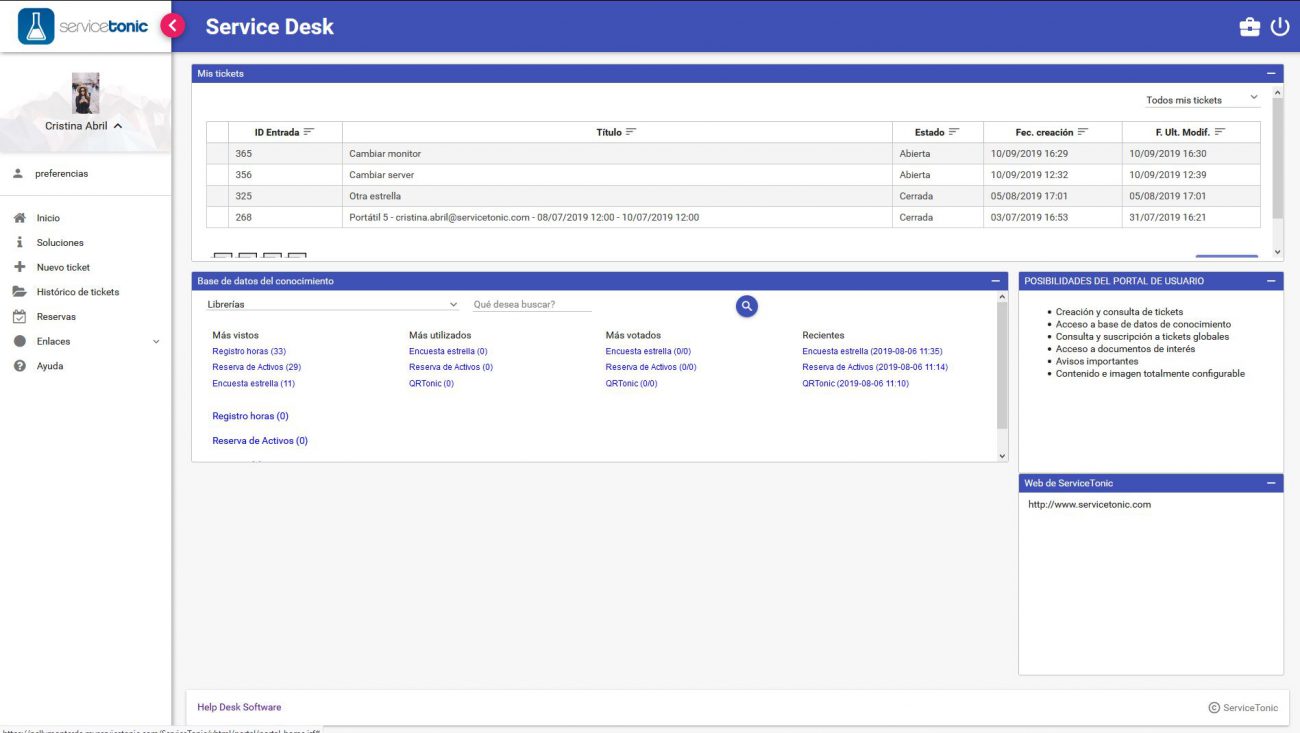CMDB (Inventory Management)
Service Desk | Help Desk Software | Asset Management
Asset Management using the CMDB
Gain full control over your assets (CIs) and manage their life cycle effectively with ServiceTonic’s CMDB (Configuration Management Data Base). CMDB is a central repository of service assets providing detailed information about each asset and their relationships. The CMDB is a key element for decision making, helping for instance to determine the impact of incidents and changes to take the right decisions.
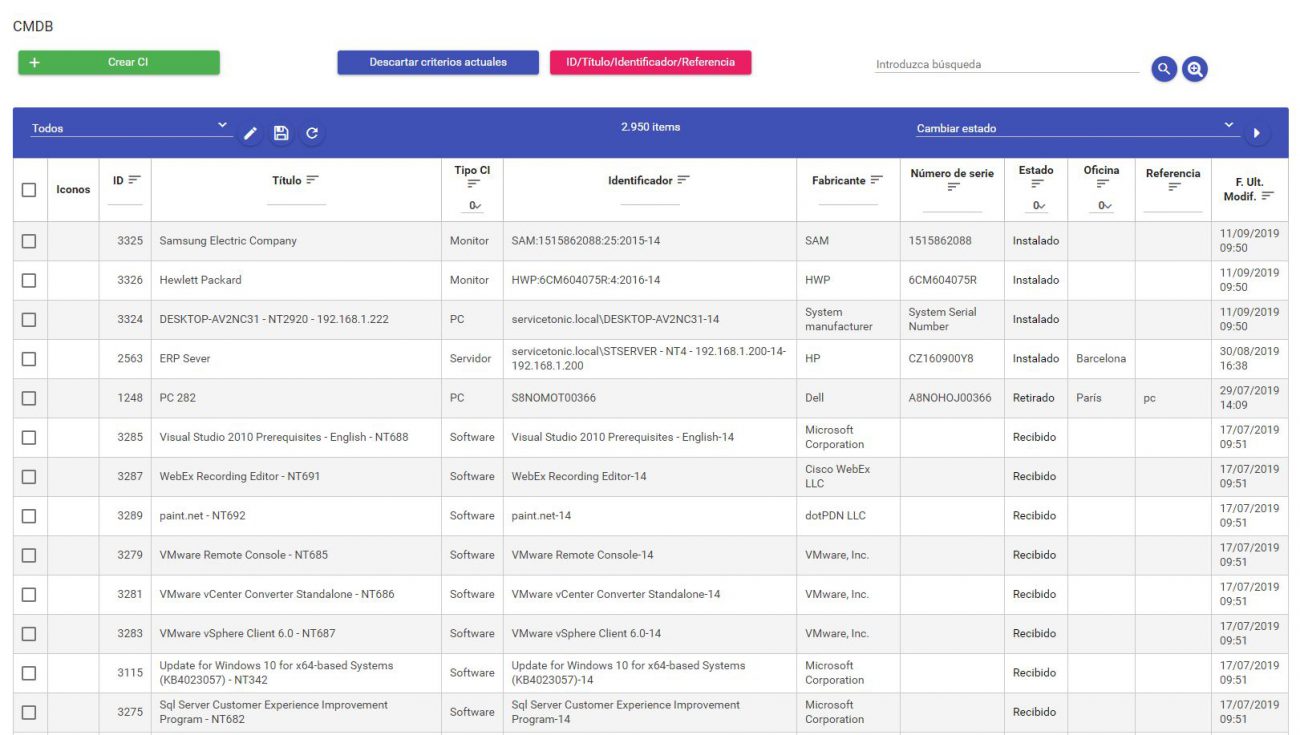
Centralized asset inventory
Central repository and relationships
The ServiceTonic CMDB (Configuration Management Database) module is essential for effective management of CIs.
Facilitates the creation of relations between the configuration items (CI) and their interactions with the service processes.
Inventory
Maintain your asset Inventory always updated
Management
Better manage the lifecycle of configuration items (CI).
Changes in assets
Identify and determine the impact of changes and incidents on an asset.
Locate critical CIs
Locate critical CIs that have repeated incidents.
Quantification of costs
Quantify the costs derived from the use of configuration items (CI) in the resolution of service requests.
Control
Have greater control over stocks, guarantees, amortizations, preventive maintenance, etc.
Optimization
Align the configuration items (CI) of the service to the business objectives.
Integrators
Define integrators to facilitate access to the CI’s details in different sources of truth if you choose a federated CMDB.
How ServiceTonic CMDB Works?
Configuration Management Database (CMDB) is the central repository of all assets involved in managing IT service and it includes different relationships between the assets and relationships between assets and owners/contacts, incidents, problems, or change requests.
Configuration and structure
Customize CIs the way you need them (define types, associate attributes and states, define relationships between them…)
Manage your assets
Start managing your CMDB assets, through automatic scans and process automation. Keep an inventory of your assets.


